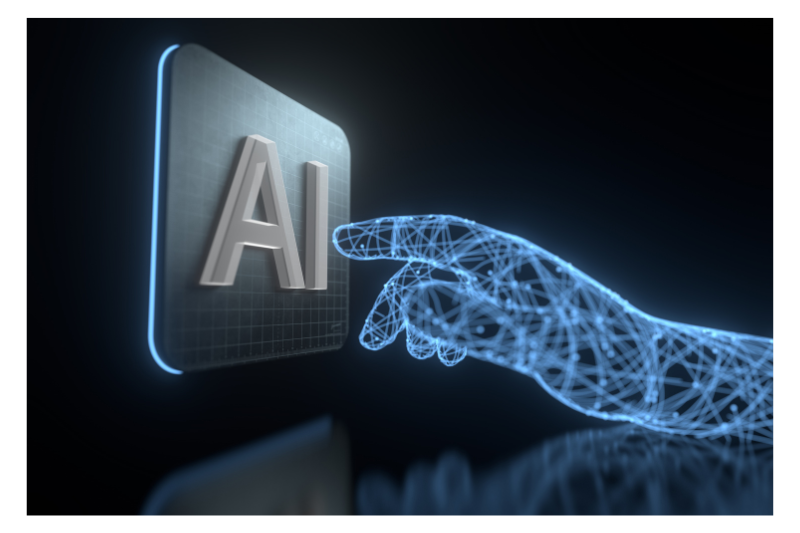How AI is Changing Cybersecurity and Impacting Accessibility
By GHD Digital
Artificial Intelligence (AI) is transforming society in ways not yet fully grasped. Its effect is being felt across industries and sectors. In this article we will be focusing on its impact on cybersecurity—
especially as it pertains to government.
Underinvestment in critical infrastructure has stretched many municipal budgets to the max, leaving few resources available to protect their assets from digital threats. This lack of funding has delayed replacing legacy systems, which are more susceptible to cyber-attacks and breaches. AI-assisted cybersecurity solutions could significantly reduce the costs associated with the human resources necessary for robust digital security, especially in the public sector.
 Before diving into the myriad ways in which AI can be utilized to enhance cybersecurity, it is important to understand the difference between AI and Machine Learning, as they are often used synonymously. Think of AI as a big umbrella that encompasses computer programs capable of doing tasks that typically need human-like intelligence, like thinking, learning, and making decisions. Machine Learning, on the other hand, is a specific branch of AI that harnesses algorithms to learn from data and get better as they progress.
Before diving into the myriad ways in which AI can be utilized to enhance cybersecurity, it is important to understand the difference between AI and Machine Learning, as they are often used synonymously. Think of AI as a big umbrella that encompasses computer programs capable of doing tasks that typically need human-like intelligence, like thinking, learning, and making decisions. Machine Learning, on the other hand, is a specific branch of AI that harnesses algorithms to learn from data and get better as they progress.
To break it down further, think of AI as a broad category that includes various subfields and techniques like robotics, understanding human language, expert systems, and deep learning. Machine Learning is one of these subfields and happens to be the most used method of putting AI to work.
The Benefits of AI-assisted Cyber Protection
Proactive Measures
AI-supported cybersecurity solutions can preemptively identify potential vulnerabilities and weaknesses in an organization's network or systems. They can continuously monitor and assess network traffic and take preventive measures to secure critical assets. This proactive approach helps local governments mitigate the potential risks of citizen information being exposed and exploited by cybercriminals.
Advanced Threat Detection
AI-powered security systems backed by robust machine learning models can analyze vast amounts of data from a variety of sources such as network traffic, logs, and user behavior, and do it in real-time. This is especially useful when there is a resident-facing website (such as a municipal site) that has information stored in the back end. Machine learning models enable systems to rapidly identify and eliminate threats at the endpoint. This helps organizations stay ahead of cybercriminals. Machine learning achieves this by detecting patterns and anomalies that are difficult for humans to replicate, thereby reducing false positives.
Intelligent Incident Response
A swift response is critical for minimizing the impact of a cyber-attack. AI-powered cybersecurity systems can help streamline the response procedure by prioritizing alerts, generating incident reports, and employing immediate remedial action will prevent sensitive resident data from being breached. By automating Incident Response (IR) processes, local governments can significantly limit the spread of attacks and minimize the damage caused by a data breach. (Cyber Incident Management of Ontario (CIMOM) was launched to help municipalities benefit from a customized and dedicated incident response team to prepare and mitigate security incidents.)
Access Management & Behavioral Analysis
AI is being used by cybercriminals to launch targeted attacks through phishing emails, malicious code, and the spread of malware. Users contribute to much of that through their behavior, whether intentional or due to ignorance. AI algorithms can help verify user identity, determine device risk levels, and analyze user behavior to detect anomalies that may indicate a compromise or unauthorized access. This is particularly helpful in government where multiple users have access to critical data. Behavioral analysis also reduces attackers' dwell time by leveraging signature detection methods to effectively filter out bad data. This ongoing analysis helps to mitigate insider threats and identify external attacks in real time.
Enhanced Intelligence Gathering
Security analysts can use AI to stay on top of relevant cyber threat-related information by collecting, analyzing, and sharing relevant intelligence about cyber threats with key stakeholders within the local government.
This can be done in the following ways:
- AI can summarize large volumes of data from multiple sources into easily--read reports
- It can use Extracting Indicators of Compromise (IoC) from social media, web forums, etc., to provide advance warnings of potential threats
- It can predict potential risks based on historical data
- It can generate alerts to warn of detected threats
- It can analyze unknown malware to determine features and behaviors and to assist with anti-virus protection
AI can also assist security teams by automating and streamlining their threat intelligence process to increase speed and efficiency. However, it is important to note that with all its benefits, AI also poses some challenges for cybersecurity teams, such as:
- The ethics around privacy, accountability, and biases
- The adversarial use of AI for phishing, deep fakes, or malicious code
- The reality of false positives, false negatives, or overconfidence
Security teams employing AI need to stay aware, use it responsibly, and continually update their skills to stay current in a rapidly changing landscape.
As cybercrime continues to evolve in scope and sophistication, it poses a significant threat to individuals, organizations, and society. AI is essential to help in the fight against cybercriminals. By continuously gathering and analyzing data from various sources, AI-powered systems can identify emerging cyber threats, zero-day vulnerabilities, and sophisticated attack techniques.
By leveraging the power of AI, government organizations can stay ahead of cyber threats and ensure the protection of their critical assets and sensitive data. As technology continues to evolve, embracing AI in cybersecurity is no longer just one in a list of options, it has become a necessity.
Subscribe to the Govstack Insider to stay updated on all the technological trends set to impact local governments.
To learn more about AMO/GHD Barrier-free Website Builder, please visit the webpage.





